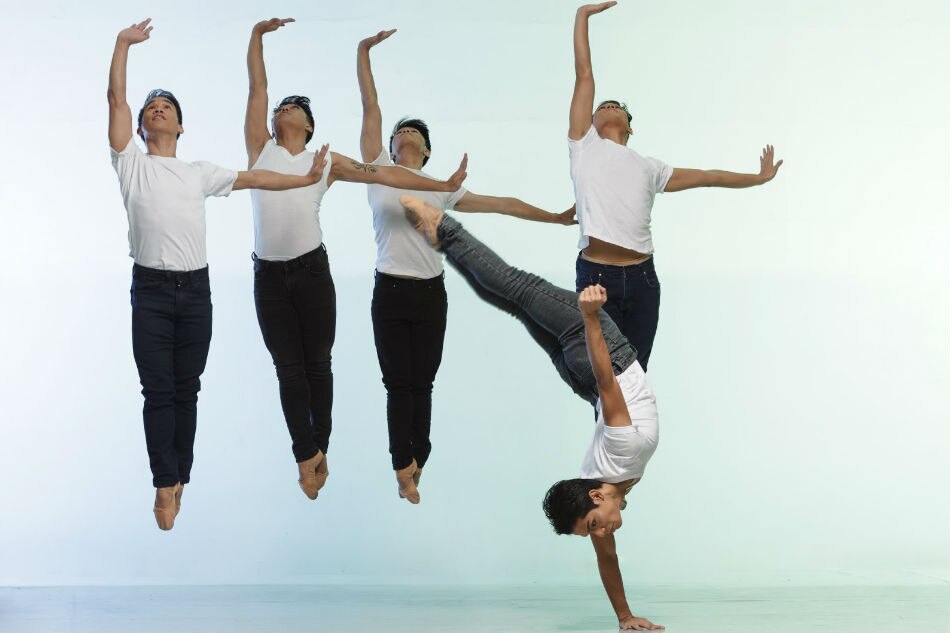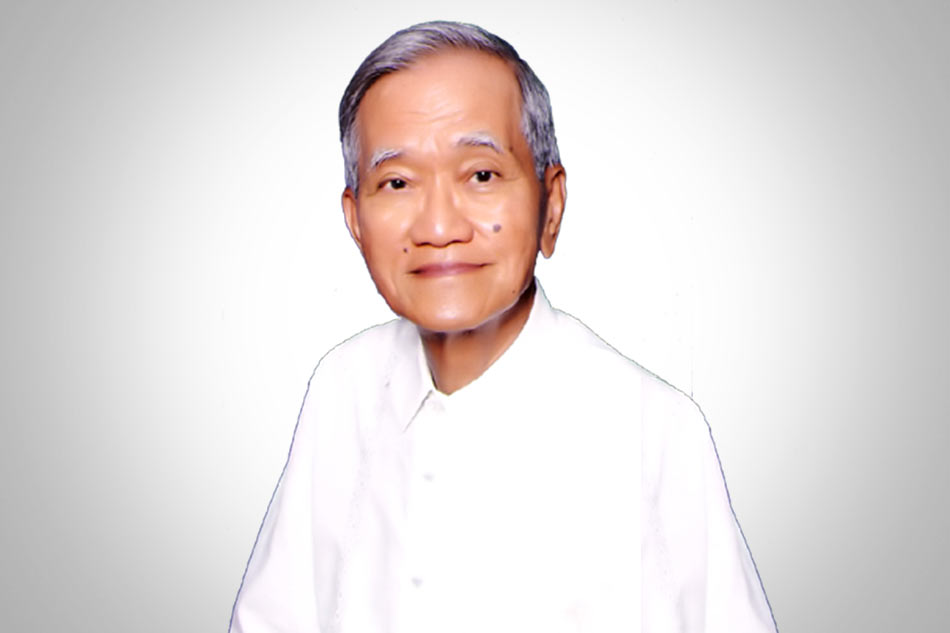It just recently occurred to me that I have never written about the National Museum of Natural History. This is the perfect time to do it since I am showing the rest of the awardees around the museum for the entire morning. On this tour were the awardees and their companions, the security detail and the rest of the Ramon Magsaysay Award Foundation staff involved in the tour.

Maria de Lourdes Martins Cruz of Timor Leste was one of seven children born to a coffee planter. She studied at a Jesuit school in Yogyakarta, Indonesia and eventually joined the Canossian Sisters but left before taking her final vows. She felt her calling was outside of the convent walls. She founded the Instituto Seculare Maun Alin Iha kristo (ISMAIK) that was dedicated to uploifting the poor through projects in health care,education, farming, animal husbandry, and other self-help initiatives. Notwithstanding the conflicts between the Indonesian and Timor-Leste militant armies in liberating the country from Indonesia, Mana Lou (as she is fondly called), crossed military lines and talked to Indonesian soldiers and refugees spreading a message of peace and solidarity and was allowed to establish a place of refuge in her father's coffee estate. eventually this was to grow to include a school for girls, orphanages, homes for the sick and a place where people of different religious beliefs and politics could find safety and peace. Her work has magnified into seven houses all over Timor Leste which is run by volunteers and are now referred to as "schools of life".

The simplicity of her approach to needs based problems has been effective in alleviating the plight of the poor in Timor Leste.
Vo Thi Huang Yen of Vietnam was born and raised in a remote village in Vietnam's Dong Nai province. Beset with polio at two and a half years of age, she refused to become a dependent due to her condition and rose above her malady. She pursued a degree in Agricultural Economics and also in Education from the Ho Chi Minh University. She also received a scholarship from the University of Kansas where she received a graduate degree in Human Development. Turning her back on opportunities in the U.S., she returned to Vietnam. These degrees tucked under her belt did not give her an advantage in her homeland. She was turned down in her first job application due to her condition. From then on, she established the Disability Research and Capacity Development (DRD) with three other persons with disability; whose aim was to create an equal and non-discriminatory society for PWDs, To date, the DRD has helped assist some 15,000 PWDS with skills and capacity building activities, scholarships, job placements, donations for assistive devices and computers, and using social media, a website on laws for the disabled, and a digital map showing PWD accessible public buildings.

She has recently obtained a doctorate degree from La Trobe University in Australia while directing activities of the DRD in Vietnam. Her inclusion in this year's roster of awardees affirms that her selfless dedication to improve the lives of the disabled, and increasing the opportunities for them in Vietnam.
Bharat Vatwani from India, is a psychologist by profession. Dining out with his wife one evening, both witnessed a thin, unkempt, mentally ill person drinking water from a canal. They talked to the man, a mentally-afflicted college graduate, took him to their clinic to be washed and treated and reunited him with his family. This led to the establishment of the Shraddha Rehabilitation Foundation in 1988 aimed at rescuing mentally ill persons living on the streets, providing free food, shelter and psychiatric treatment and eventually, returning them to their families. Starting with a 2 bedroom tenement house, they could only treat three people at a time. However, their work became public when they unknowingly treated a street person who was a Mumbai art professor who suddenly disappeared. Learning what the Vatwanis had done the school's faculty and students organized an art exhibit that raised US$22,357.00. The Vatwanis used this amount to buy property in Mumbai for a 20 bed facility in 1997. Private and corporate donations started to come in that helped them expand their work. By 2006, they have expanded operations to a 120 patient facility that spread in a 6.5 hectare property and had 5 buildings. They are now aided by police, social workers, and referrals. Their services range from personal hygiene, medical check-ups, psychological treatment, all done in the Karjat facility where they can engage in simple farming activities and in the multi-religious meditation center.

Mr Vatwani's work comes as a much needed "shot in the arm" in rescuing the mentally ill destitute patients which are literally scorned by Indian society.
Sonam Wangchuk also from India comes from the province of Ladakh. He was one of the many children of a local leader, he had a difficult education due to discrimination of minorities in the Kashmir region, schools lacked teaching equipment, teaching standards were poor, textbook content was locally irrelevant and the medium of instruction was alien in the mountains. An engineering student at the National Institute of Technology at 19, he tried to support himself by offering tutorial services to other students who were preparing for the national college matriculation examinations. Renting a hotel function room he advertised a coaching program that drew close to a hundred students. After graduating from an engineering degree, he founded the Students' Education and cultural Movement of Ladakh (SECMOL) and started coaching Ladakhi students, 95% of whom used to fail the government exams. Piloted in a village school, the program involved training teachers in "creative, child-friendly and activity based education", introducing curricular changes to make subjects relevant to Ladakhi culture and context, prioritizing English over Urdu to prepare students for higher education and promoting the Ladakhi language. Event tually the program was adapted into 33 schools and became a veritable movement. He established the Operation New Hope in 1994 to expand and consolidate the partnership-driven educational reform program.The program has already trained 700 teachers, 1,000 Village Education Committee (VEC) leaders. and dramatically improved the success rate of students in matriculation exams from a mere 5% in 1996 to 75% in 2015. in 1998, he opened the SECMOL school with a permanent faculty, volunteers, 300 students. It is an alternative boarding school that also offers review, certificate and associate-level courses, rebuilds student confidence, develops life skills, revisits the fundamentals and offers courses ranging from leadership training to solar power installation. His ideas and model programs have been adapted in educational systems in the Himalayan Belt as well as Switzerland.

Mr Wangchuk's contribution to Ladakhi Society underscores the need for adaptive learning and harnessing science and culture effectively to raise learning standards in his province.
We made our way to the National Museum of Natural History after our photo ops at the Rizal Monument and were welcomed at the rear entrance by the administration and staff of the museum and assigned to us was Lau de los Santos. The museum was designed in such a way that it highlights the flora and fauna of our country according to the elevation. Each floor features specimens from the stratospheric to the subterranean. We were welcomed by the president of the museum Mr. Ramon del Rosario. After the necessary introductions and another backgrounder into the museum by guide Lau, photo ops for the group with the Tree of life as a background they were ushered to the fourth level where the tour was to start.

Incidentally, the museum building was designed by Antonio Toledo in 1930 and was formerly used as the Department of Agriculture and Commerce in 1940. The Department of Tourism used the building as their headquarters until 2015 and later moved to their offices in Makati City. The building was then donated to the National Museum foundation and retrofitted under the design team of Architect Dominic Galicia and Interior Designer Tina Periquet.

The rest of the party took the regular elevators and we met them at the gallery entrance. We toured each level dutifully allowing photo opportunities among the awardees as they admired the museum's grandeur. Truly, the Philippines is blessed with its rich biodiversity. From cloud rats, civet cats, bugs and butterflies, flying lemurs and bats, this museum does not fail to impress. At the canopy level were a myriad group of specimens: primates and birds, more rodents, snakes. as went lower through the galleries, we showed the guests the raison d' etre per room. Particularly interesting was the mangrove section and the class showcases for different plants. finally as we got to the ground level, we were ushered into the atrium where the skeleton of Lolong was displayed. Along within that room were the recent discoveries of rhinoceros bones and arrowheads. These archeological discoveries displace the Tabon man as the earliest inhabitants of the Philippines. These remains date back 700,000 in our history.

Mr del Rosario requested us to view a short audio-visual presentation on the ground floor and then made the special announcement that the galleries that were still closed off to the public was available for us for special viewing. What a treat! I won't spoil the anticipation of those who want to see the closed galleries when they open so let's just pretend I didn't see anything...

After the closing commentaries. the party made its way to Greenbelt 1 in Makati for a sumptuous lunch hosted by the family of fellow awardee Mr. Howard Dee at Peking Garden. Special dishes were prepared for those who had dietary restrictions while the rest had crispy fried green salad with almonds, Peking duck breast wraps, mushroom saute, crispy Peking duck bones and a dessert of mango and tapioca. Lunch was a fun affair that lasted to mid-afternoon then before departure, the obligatory phot ops were taken before some of the guests proceeded to Greenhills for pearl shopping and the rests of the guests went to the Mall of Asia and some back to the hotel.


















































